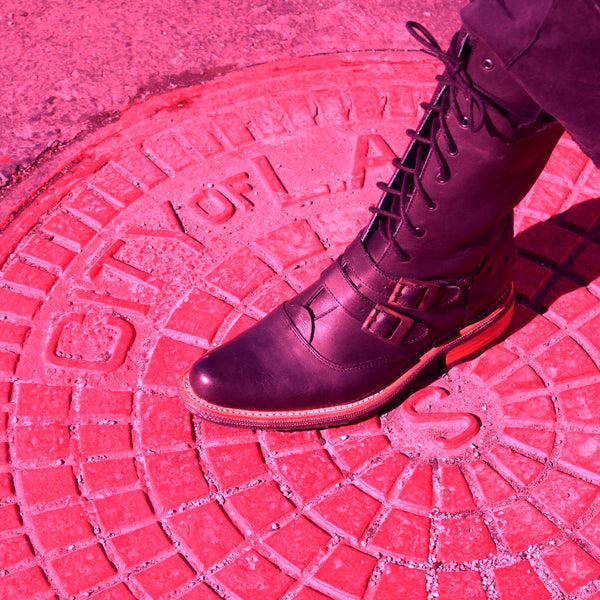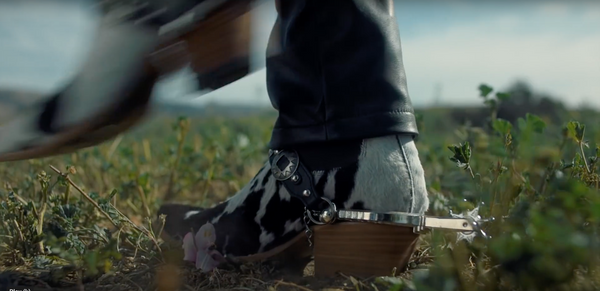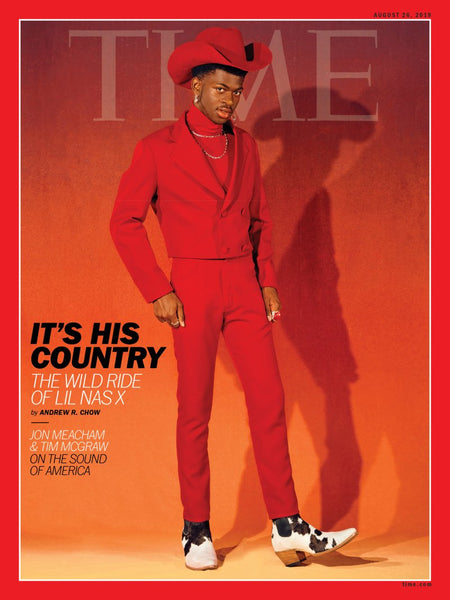tell me more... Neon Zinn, transformation in rope
psk: many of your pieces feature a single rope twisted upon itself and it's often difficult to figure out the process. can you describe the process of getting each piece into it's end form.
Seth Damm: Let’s take this piece as an example (see below). It started out innocently enough...I just don’t know what happened, it got away from me. I am partially kidding although many times a piece like this has so many moving parts that I can get lost. Or I’ve decided to go down a path and I hope it works for the greater good, like the three-dimensional curved elements up by the models face.That is a time intensive experiment, because that whole length is wrapped in multiple colors of thread. If the experiment hadn’t worked I would of had to disentangle that entire part. It’s happened before.
Usually I will map out a piece on the table, figuring out all the parts so I can cut each length of rope to approximate size. The piece pictured is comprised of over 10 lengths of cut rope. Of course the trick is remembering which one goes where in the overall composition when you are holding 10 lengths of cut rope that look the same . Next I pre-soak the lot, prepare my dye buckets, boil the water, etc. The intensity and placement of color is key in most of my designs so I have to stay aware of that while I am dip-dyeing away. This is only the beginning! Then I carefully rinse and air dry each length. Once I have all the parts ready, I lay them back out on a table and start the time consuming process of joining everything together. I’ve developed some of my own techniques for creating gaps and sculptural elements. Sometimes I use hidden stitching (never glue) to hold element together. While I’m doing all of this, I’m also keeping in mind the fit, size, wearability of a piece. I take the time to put each design on, usually multiple times as I go, to make sure it is draping on the body correctly. There are adjustments made during the whole process. Next, I spend however long it takes to trim each cut end. That in itself is an art form and creates some beautiful piles of colorful fuzz around the table. Lastly, I create the brass closures from scratch, hammering the wire, creating the hook and eye, making sure the necklace is fitting correctly before I cut the ends where the closure is attached. Even the simplest loop necklace has details and trimming that require a lot of time and attention to detail.

psk: though similar layouts and shapes are formed, each necklace has completely unique detailing. do you even make the same piece twice?
sd: There are certain classic designs that I recreate over and over, but they are never exactly the same. Part of what keeps the everyday practice of making these necklaces fresh, is that I treat each new piece, even if it is the same design as the last, as a unique venture. The same design will be going to a different person, a different place, so I keep that in mind while I’m working.
Also, I might start one piece at 9 in the morning, and the next at 10 in the evening, so each one is a different part of my day, they pull me through different parts of the day, and these are parts of being an artist/designer that I never got to experience when I was working a day job and making art mostly in the evenings. So in an interesting way, time is one of the details that goes into each finished piece, and each second is unique.
psk: what about cotton rope caught your attention? do you ever feel limited by using it as your medium?
sd: I’ve skipped around a lot of different mediums in my life, and never has a material held my attention as long as rope. I am metaphorically and materially entranced by it. It’s becoming like paint for a painter, or clay for a sculptor. One would never ask a painter if they are tired of their paint, ha! The qualities that first caught my attention, smell, feel, familiarity, malleability, wearability are all still alive and well. I get a thrill every time I open my box of raw rope. Next step will be making my own rope from scratch and looking at different base materials than cotton. But for now, the 100% cotton rope I use, takes the dye perfectly, softens up over time like a favorite T-shirt, and has a rustic quality that keep my designs approachable.

psk: where do you find seek inspiration for the colors you use?
sd: I’ve always had a thing for color going back to my days of printmaking and painting. In the early days of Neon Zinn the coloration was a mess, sometimes in a good accidental way, but mostly in a me-trying-to -figure-out what I wanted from the combination of dye and rope. My first pieces were spray painted with text from Howard Zinn. Next I just started to dip the necklaces in random colors. The turning point was when I realized that the color, and placement of the color, was as important to the overall design as were the shapes and lines I was creating. When I am at the dye buckets, my color inspiration is very in the moment and intuitive, like a painter would be. I stay open to what is happening right in front of me on each length of rope, all within the constraints of the palette I have chosen for a piece.
psk: you live and create in new orleans, would your work look different if you lived elsewhere?
sd: Well, I began this whole ropey adventure while I was still living in Seattle. I work very much solitary anyway, and Seattle accentuated that part of my process. Living in New Orleans, I still work very much alone, but I feel a connection over fences and into the street. A place that is not all about the work but is also about the play in life, is my kind of place. It took 20 years of being away from New Orleans, to feel secure enough in myself, to move back to New Orleans. Neon Zinn comes from a very non-stressful part of my being, so I’m sure if I lived elsewhere, with more financial pressures, the work could very well feel different.

psk: congrats on your incredible collaboration with nigerian men's line Orange Culture - what was it like working with them? how did it all get started?
sd: Thank you! What a dream! What a perfect confluence of styles and general outlook on life and creativity. The wonders of social media. I had been answering questions about who I’d like to work with in the future, and then there was the email in my inbox from Orange Culture. From there Adebayo gave me some general guidelines about his color palette for the season, and his inspiration for the collection having to do with political corruption and public gatherings/festivals. I respectfully moved forward in my process with an open mind. The biggest leap was when I decided to cut into the rope; purposefully compromising the integrity of my precious rope. I had never done that before. It was kind of scary and liberating at the same time. Plus I felt it perfectly related to these ideas of the social fabric being shredded. Each of those pieces is strong but vulnerable, just like the Orange Culture men that Adebayo has in his vision.

view more of seth's work at www.neonzinn.com
follow seth on instagram here
images are courtesy of seth damm, Cecilia Corsano + Orange Culture
Leave a comment
Comments will be approved before showing up.



